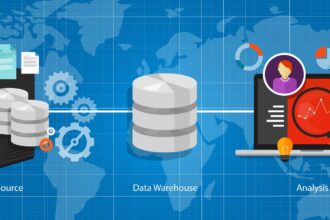There was a time not too long ago (late 1970s to be precise) when companies used to have an Electronic Data Processing Department, with EDP Managers to manage data processing function. The EDP Department evolved to become the Management Information Systems Department in early 1980s and the MIS Manager ran the show when it came to ‘computerization’ initiatives as it used to be called back then.
There was a time not too long ago (late 1970s to be precise) when companies used to have an Electronic Data Processing Department, with EDP Managers to manage data processing function. The EDP Department evolved to become the Management Information Systems Department in early 1980s and the MIS Manager ran the show when it came to ‘computerization’ initiatives as it used to be called back then.
 As technology evolved from mainframes to client-server computing and with the rise of personal computers (PCs) or desk-tops, adoption of information technology across organizations picked up the pace and IT was no longer limited to key business processes such as accounting and inventory management.
As technology evolved from mainframes to client-server computing and with the rise of personal computers (PCs) or desk-tops, adoption of information technology across organizations picked up the pace and IT was no longer limited to key business processes such as accounting and inventory management.
With expansion of computer networks and growth of the internet in 1990s, an increasing number of business processes started getting ‘computerized,’ resulting in decentralization of information technology, and companies started moving away from having a ‘centralized’ EDP or MIS department for managing their IT functions. This decentralization of MIS (or IT) received a boost with development of ‘business friendly’ software applications that just needed to be customized to meet business requirements rather than developing them from a scratch. Case in point – ERP or CRM systems.
But although key functions of MIS department were decentralized due to rapid expansion of information technology within the organization, there was need for a role to monitor and guide the adoption and use of information technology tools across organization in order to make sure that multitude of systems that were being developed ‘talked’ to each other and followed consistent organizational standards when it came to development and usage. Role of Chief Information Officer (or CIO) evolved to meet this need and most large and medium sized companies started having a CIO function or role since middle of 1990s.
The role of CIOs gained importance with the expansion of internet and growth of web enabled business applications during dot com boom. And the CIO’s function became critical during the outsourcing boom following dot com bust in early 2000s as a growing number of CEOs relied upon their CIO (and their ‘twin’ brother, the CTO) not only to manage the increasing complexity of enterprise IT but also to manage it in a cost effective manner through outsourcing. As a result, the CIO’s role became critical within most large and medium sized companies in the last ten years.
But as a ‘short’ history of information technology can tell us, the only thing that is constant in IT is change. And change at an even faster pace with each passing year. To confirm, just consider changes that have taken place in IT over the past few years. We have seen IT evolve at an even faster pace, thanks to rapid growth and adoption of cloud computing, mobile devices, social media and explosion at the rate at which data is being generated by end users, resulting in phenomenon that is now known as ‘Big Data’.
Add to this the fact that technology is becoming even more business and end-user friendly. Just as an example, because of cloud computing and software as a service (SaaS) model, some of the work that was done traditionally by the CIO’s or CTO’s organization is now being done by outside service providers with help from functional executives in user departments. To cite another example, CMOs or key executives in the marketing department of large and medium sized companies are working directly with vendors with minimal inputs from CIO or CTO of their organization to leverage social media for multi-channel marketing or customer engagement. This growing ‘consumerization’ of technology has resulted in erosion of the clout or influence CIOs had in their respective organization just a few years back.
So the question is how can CIOs regain the past glory of their role? In my opinion, the best way Chief Information Officers (Or CIOs) can regain past glory of their role is to adopt and grow with changing technology and evolve to become Chief Insights Officer – still a CIO! As more and more applications get migrated to cloud and with enterprise apps and data residing in cloud managed mostly by third party service providers, ‘traditional’ functions performed by CIOs are being performed by third party vendors. But what has not changed is the need for ‘quality’ information in a timely manner to aid in decision making across organization. With more data being generated outside the organization than within the organization, such as social media data, there is a need for someone at a senior level to not only monitor but guide the organization as to how data are collected, stored and most importantly analyzed in a timely manner to aid in decision making. Given the volume, velocity and variety of data being generated, it is no longer enough just to prepare ‘simple’ reports, but to derive critical insights in real time from available data, both from internal and external sources. And in my opinion, no one is better prepared to take on this challenge other than good old Chief Information Officer.
So Dear Chief Information Officer, are you ready to take on the role of Chief Insights Officer?
(Chief Insights Officer? / shutterstock)










